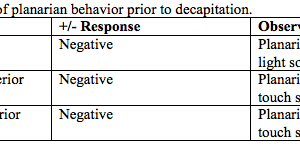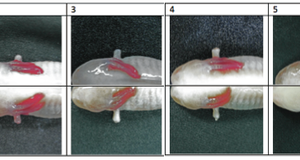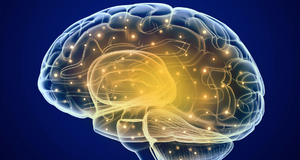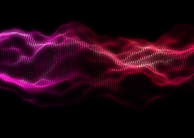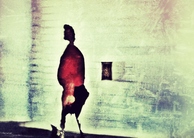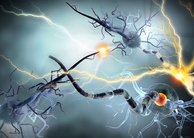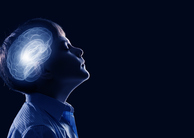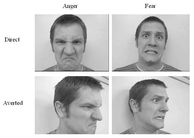From Discussions VOL. 2 NO. 1Alternative Methods to Autologous Nerve Grafting for the Regeneration of the Peripheral Nervous SystemCOLLAGEN NERVE GRAFTINGAnother alternative to the autologous nerve graft that is being developed is the use of a collagen mold to create a graft between the two severed ends of a nerve. Collagen is one of the major components that make up the extracellular matrix. This material has had a large degree of success in other types of surgical procedures, and has also been used in nerve repair [4]. It is a viable material for use as a graft as it provides a high level of permeability when placed within the body, is biodegradable, and allows different cell types to grow within it [4]. What makes collagen even more useful as a nerve graft is that it can be shaped in structures that are able to promote nerve regeneration [4]. Collagen itself actually plays an important role in nerve regeneration, and it is possible to control the porosity of collagen structures. This control makes it possible to decide the environment in which the nerve regeneration takes place [5]. COMPARISON OF METHODSAt this point in time, the autologous nerve graft has had the highest success of nerve regeneration. The complications involved with an autologous graft make it desirable to find a method that could replace it. Results from experiments conducted by scholars such as Felix Stang, Hisham Fansa, Gerald Wolf, and Gerburg Keilhoff indicate that collagen does not appear to be an acceptable material to use as a nerve graft [4]. In their 2005 experiment, the authors were able to obtain slightly better regeneration rates by adding Schwann cells to the collagen grafts than they were by using the collagen grafts alone. Even when using the Schwann cells, however, the regeneration capabilities of neurons within a collagen graft is much lower than if an autologous graft had been used. This finding leads to the conclusion that while collagen grafts may not be an adequate replacement to autologous grafts, the presence of Schwann cells appears to be able to improve the regeneration rate of neurons in non-neural grafts, and another type of graft may therefore be enhanced with such cells. In contrast, another experiment conducted in 2003 by Yueh-Sheng, Chien-Ju Liu, Chun-Yuan Cheng, and Chun-Hsu Yao entitled "Effect of bilobalide on peripheral nerve regeneration" resulted in a very different outcome when using collagen as a nerve graft. In this experiment, the researchers attempted to combine collagen with laminin, a neural growth stimulant, and fibronectin, a water-binding protein to create their graft. They then attempted to combine this graft with bilobalide, an extraction taken from Ginkgo biloba leaves. They found that this mixture significantly promotes peripheral nerve regeneration, but that it is crucial to use the correct dosage of bilobalide, as a large dosage can actually inhibit growth, and a dosage that is too small would not be effective [8]. Non-neural grafts appear to have potential as a replacement method to autologous grafts in the near future. With the development of improved methods for preparing nonautologous tissue along with other improvements associated with additional experimentations, non-neural grafts may be able to reach the same level of success or perhaps even surpass this more traditional form of grafting. Because non-neural grafts do not seem to have the disadvantages that are associated with the autologous graft, they could easily become the method of choice for peripheral nerve regeneration, once equivalent success rates are achieved. SUMMARY AND CONCLUSIONAs of this point in time, autologous grafts are the most widely used form of nerve grafting. These grafts have a higher success rate compared to other grafting methods being developed, but drawbacks associated with this graft type make it desirable to develop alternatives. Experiments involving collagen as the base for a nerve graft have shown that this method is probably an ineffective form of treatment for the regeneration of peripheral nerve cells. However, these studies have also shown that there are benefits to imbedding Schwann cells into implanted grafts. It has become hard to make any further advances with collagen as the base for nerve grafts, as it is difficult to remove the drawbacks inherent in using collagen as the base for the graft. The collagen tubes' wall thickness, porosity, diameter, and alignment of the inner skeleton must all be manipulated in order to produce a good alternative for nerve grafting [4]. Even with the manipulation of these factors, animal studies that made use of collagen grafts for nerve repair showed a permanent loss of motor function and impaired sensitivity. In general, very few myelinated fibers are able to regenerate through a collagen conduit and enter the distal nerve segment, even when Schwann cells are seeded in the graft to increase the regeneration abilities [4]. Importantly, collagen grafts that made use of Schwann cells did have an increased regeneration rate, but this rate is not achieved to the point that it is comparable to the regeneration rate of autologous grafts. In the experiment involving bilobalide, it appears to be difficult to correctly manipulate the bilobalide dosage in order to effectively create a nerve graft that would ever surpass the success rate of the autologous graft. Differences in suture size and extent of the damage would make it difficult to judge the correct dosage of bilobalide, and the results would end up being less predictable than the current method. In contrast, non-neural grafts appear to have a significant chance at becoming the dominant grafting technique. Recent advances in development techniques involving the treatment of tissues with chemicals for non -neural grafts have been developed that leave the native ECM intact while removing cellular debris [6]. If this new technique is refined even further, it may be used to create a material that is viable for use as a nerve graft. It may then be possible to increase the success rate of the graft by seeding the inside of it with Schwann cells. This combination may be able to lead to a grafting device that has a similar success rate to that of autologous grafting but without the drawbacks associated with an autologous graft. The benefits to using tissue not taken from the patient's body remove the complications associated with the autologous graft, including the additional surgery, the limited availability of donor nerves, and the possibility of a loss of function at the donor site. Various advantages and disadvantages associated with each of the methods described in this paper are summarized in Table 1.
As can be seen in Table 1, when the advantages and disadvantages of autologous and non-neural grafts are directly compared, as shown, it is evident that if nonneural nerve grafts are able to obtain a success rate comparable to that of the autologous nerve graft, it could easily replace autologous as the most used method for peripheral nerve regeneration. It is clear that while the autologous nerve graft is the most popular method in use today because of its high rate of neural regeneration, there are still enough drawbacks that make it desirable to find an alternative. The most promising alternative at this time appears to be the non-neural graft. This type of graft has the potential of a high success rate with none of the drawbacks currently associated with the autologous graft. AcknowledgementsI would like to thank Dr. Peckham for his advice while writing this paper and Dr. Pagel for leading the class in which the paper was written. ReferencesKim, B., Yoo, J., Atala, A., Peripheral Nerve Regeneration Using Acellular Nerve Grafts . J Biomed Mater Res A., 2004, 68(2):201-9. Hudson, T., Liu, S., Schmidt, C., Engineering an Improved Acellular Nerve Graft via Optimized Chemical Processing . Tissue Eng., 2004, 10(9-10):1346-58. Ao, Q., Wang, A., Cao, W., Zhao, C., Gong, Y., Zhao, N., Zhang, X., Preparation of Porous Multi-Channeled Chitosan Conduits for Nerve Tissue Engineering . Key Engineering Materials, 2005, 288-289:27-30. Stang, F., Fansa, H., Wolf, G., Keilhoff, G., Collagen Nerve Conduits – Assessment of Biocompatibility and Axonal Regeneration . Biomed Mater Eng., 2005, 15(1-2):3-12. Stang, F., Fansa, H., Wolf, G., Reppin, M., Keilhoff, G., Structural Parameters of Collagen Nerve Grafts Influence Peripheral Nerve Regeneration . Biomaterials, 2005, 26(16):3083-91. Schmidt, C., Leach, J., Neural Tissue Engineering: Strategies for Repair and Regeneration . Annu Rev Biomed Eng., 2003, 5:293-347. Flores A., Lavernia C., Owens P., Anatomy and Physiology of Peripheral Nerve Injury and Repair . Am J Orthop., 2000, 29(3):167-73. Suggested Reading from Inquiries Journal
Inquiries Journal provides undergraduate and graduate students around the world a platform for the wide dissemination of academic work over a range of core disciplines. Representing the work of students from hundreds of institutions around the globe, Inquiries Journal's large database of academic articles is completely free. Learn more | Blog | Submit Latest in Neuroscience |









